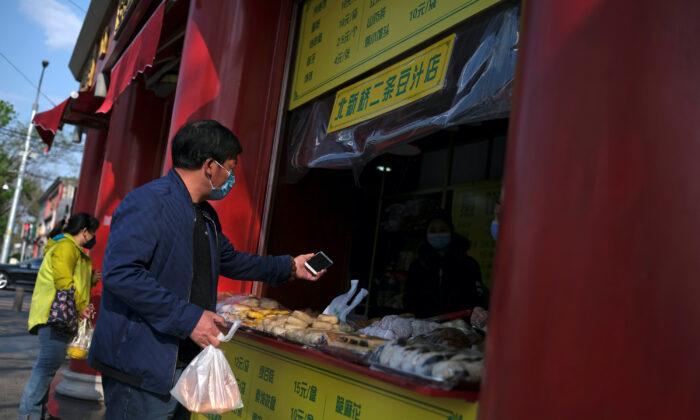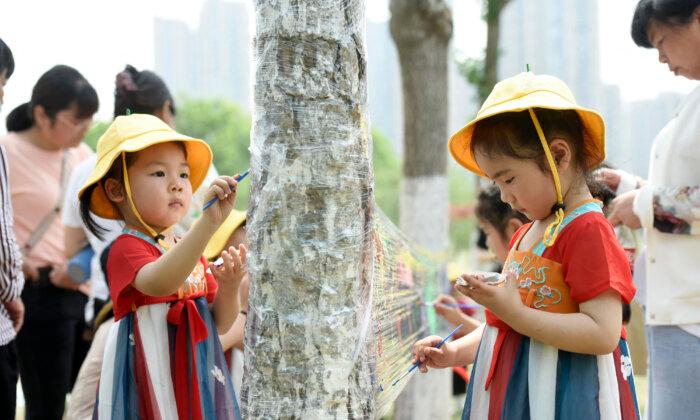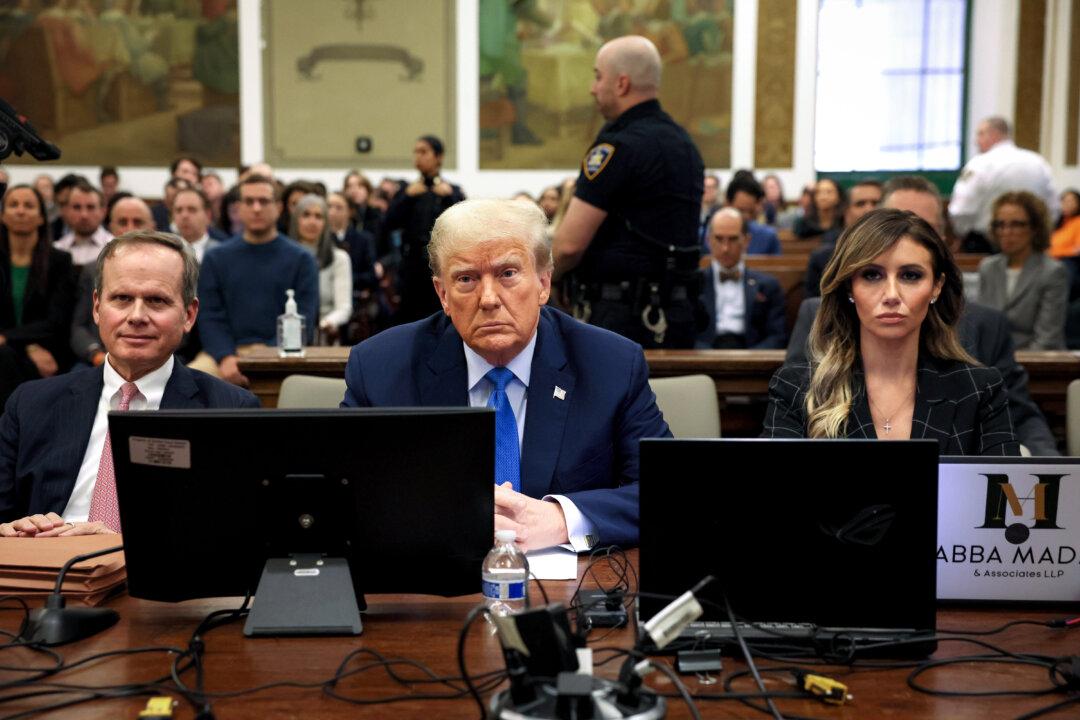Commentary
The leadership of the Chinese Communist Party (CCP) knows what’s coming to the people of China: food shortages.
That’s the reason behind Beijing’s latest draconian edict to the people, the so-called
Clean Plates Campaign. Once enacted, the new law will limit the amount of food that people can order at restaurants and may even extend into what amounts Chinese citizens can consume in their own households.
This latest totalitarian move by the CCP follows Beijing’s very public arrest of Hong Kong media mogul Jimmy Lai, whom the regime designated a threat to
national security. The two may not seem related, but evidently, freedom of speech and freedom of dining are both considered by the Party to pose national security risks.
Unfortunately, China has seen a significant rise in China’s food prices, particularly pork, which is the national staple. As of July, there was an almost
90 percent year-over-year rise in pork prices, and food prices overall rose 10 percent over the same time period.
The Party rightly fears that food shortages and the accompanying inflation can lead to widespread
civil unrest in China. What’s more, the shortages aren’t expected to end anytime soon, either. In fact, they will likely grow worse.
Chinese government authorities and their official media outlets are citing
food wastage by ordinary citizens as the reason for the new policy. Essentially, they’re blaming the people for the food shortages, while deliberately ignoring the true causes. The fault lies partially with Mother Nature, but in large measure, the CCP is to blame.
CCP Makes Natural Disasters Worse
Consider, for example, that in 2019, China lost at least half of its swine herds due to Beijing’s
poorly managed response to African swine flu. With China possessing more than half the world’s pig population, there aren’t enough swine in the rest of the world to fill that gap. In some areas, pork in the marketplace is as rare as a panda sighting.
In addition to African swine flu, China’s crops are threatened by infestation from ravenous insects. Swarms of desert locusts in biblical proportions have ravaged East Africa and Pakistan. They may also soon impact China’s grain production in Yunnan Province, located in China’s southwest. But they aren’t the only locusts. Swarms of a different breed from Laos are already eating into China’s crops.
An even more dangerous threat looms this fall with the expected resurgence of the
armyworm. The pest, which breeds even faster than locusts, first appeared in China last year, but now has a foothold in the south and southwest. Chinese agricultural officials fear that the losses to corn and wheat crops may be
much worse than in 2019.
Then, there are the floods. More than
13 million acres of farmland are under water, destroying at least 5 percent of China’s rice production, and perhaps twice that if flooding continues. The financial costs exceed $21 billion and have affected more than 55 million citizens.
Depleting Grain Reserves and Importing More
As a result, China’s food imports have risen dramatically. By July, China’s grain imports were already 21 percent higher than the entire prior year. But that may not be enough. With the pandemic still affecting the world, importing food may be less reliable than before. Some nations are even
halting food exports during the pandemic.
Geopolitical strains with the United States and Australia are also a factor. China has imported more than 9 million tons of soybeans, about 100,000 tons of wheat, and almost 65,000 tons of corn from the United States. But if relations continue to deteriorate, the United States, China’s top agricultural
trading partner, could cut off Beijing from food exports, making it more vulnerable to scarcity than it already is.
Another red flag is the Party’s recent
prohibition against photographing the nation’s strategic grain reserves. This new restriction comes after images of moldy corn taken at a storage depot in Heilongjiang Province showed up on Chinese social media.
Typically, strategic reserves of food or fuel are used as propaganda tools to assuage public concerns. But as of August, two main Chinese agricultural authorities, the China Grain Reserves Corp and the National Grain Trade Center, have already
released more grain reserves than used the entire year of 2019.
The disturbing images of rotten food supplies and subsequent photo ban will only stoke fears and raise doubts in the minds of the people about the Party’s ability to feed them.
Falling Incomes, Rising Unemployment
As if food shortages, price inflation, and natural disasters weren’t troubling enough for the Party, double-digit unemployment and falling consumer incomes are putting even
more pressure on citizens. But the Party’s decision to pour more salt into those wounds with its Clean Plates Campaign may not yield the desired results.
It’s one thing for a generation to be born into scarcity, but quite another to have insufficiency forced upon it. In the former case, one knows no other reality; hopeless acceptance is perhaps all one knows from the first day to last. But in the latter, anger, dissent, and rebellion against the Party could be much more probable outcomes.
CCP Virus, History Boomerang on China
The CCP virus is likely a synthesized pathogen, according to
Luc Montagnier, the Nobel Prize-winning virologist who discovered HIV, and
Dr. Fang Chi-Tai of National Taiwan University. Its China origins, specifically in Wuhan, and the Party’s deliberate or accidental
mismanagement of the outbreak has been a
major factor in the emerging national food shortage.
The cause is simple and predictable. Lockdown measures in agricultural exporting nations have led to less food being harvested and exported. In short, the pandemic has been a major cause of China’s imminent food crisis. The political effect of the Party’s pandemic culpability and ineffective responses, including its latest insulting Clean Plates Campaign, remain to be seen. But it could be more difficult to manage than Party leaders anticipate.
Perhaps it’s just coincidence, but the last time food scarcity was a major problem in China was in the
1970s, when one man with absolute power ruled over the nation with an iron fist, re-education camps, and a little red book of wisdom. China was alienated from the rest of the world, and the Party was on the brink of collapse,
saved by Western economic intervention.
Today, another solitary man wields absolute power in China, which he rules with a digital fist, re-education camps, and his own little black book of personal wisdom. Like his predecessor, he too is rapidly alienating China from the rest of the world, driven by the Party’s abuse of the international system and the resultant Western economic decoupling.
Yes, food scarcity is a matter of national security for China; but it’s a much bigger threat to the survival of the Party.
James R. Gorrie is the author of “The China Crisis” (Wiley, 2013) and writes on his blog, TheBananaRepublican.com. He is based in Southern California. Views expressed in this article are opinions of the author and do not necessarily reflect the views of The Epoch Times.





